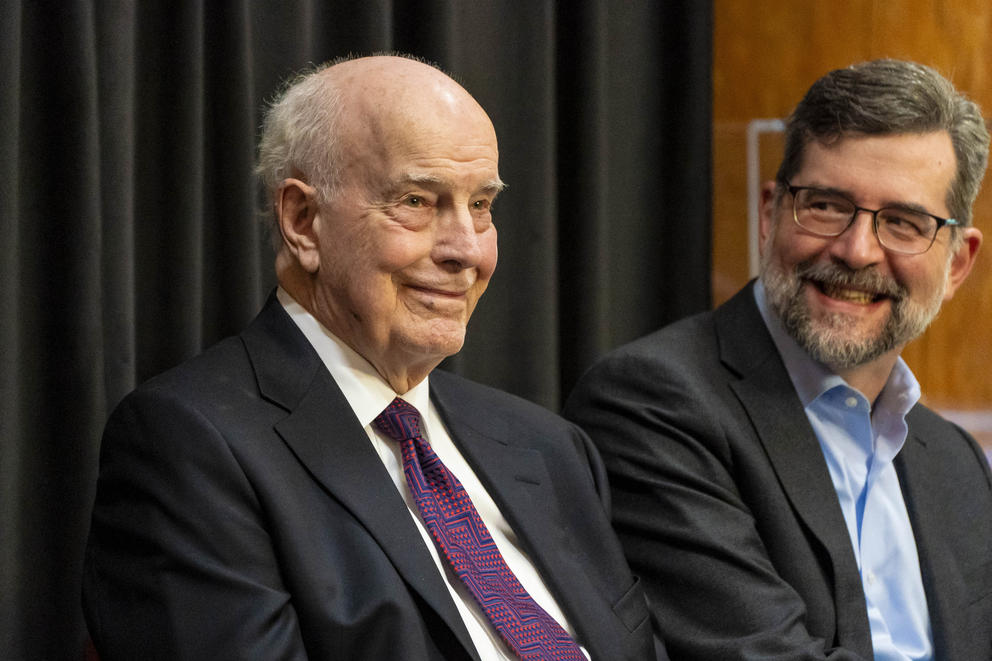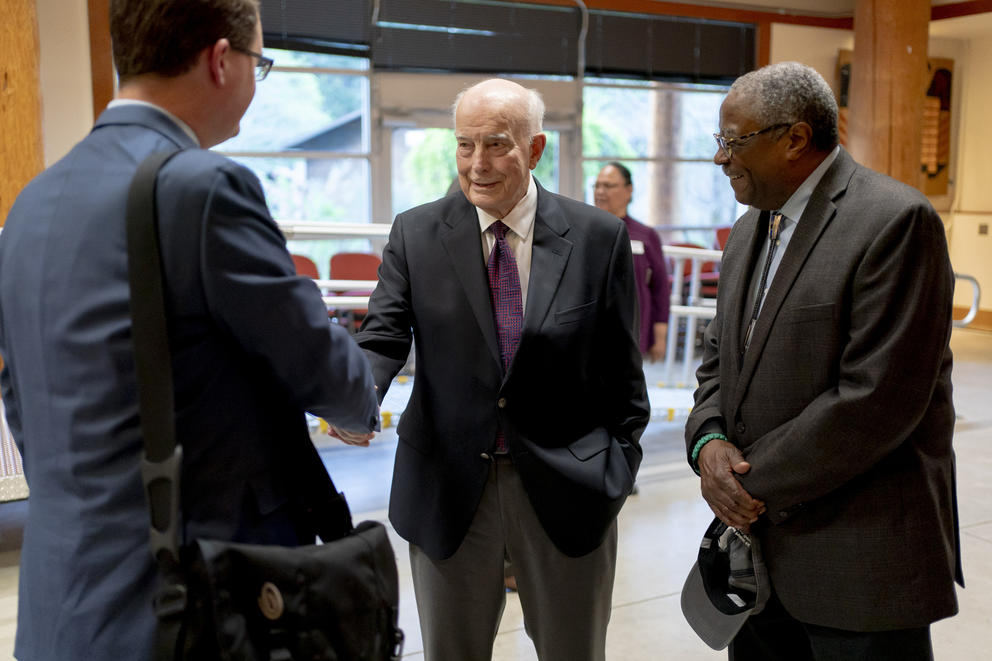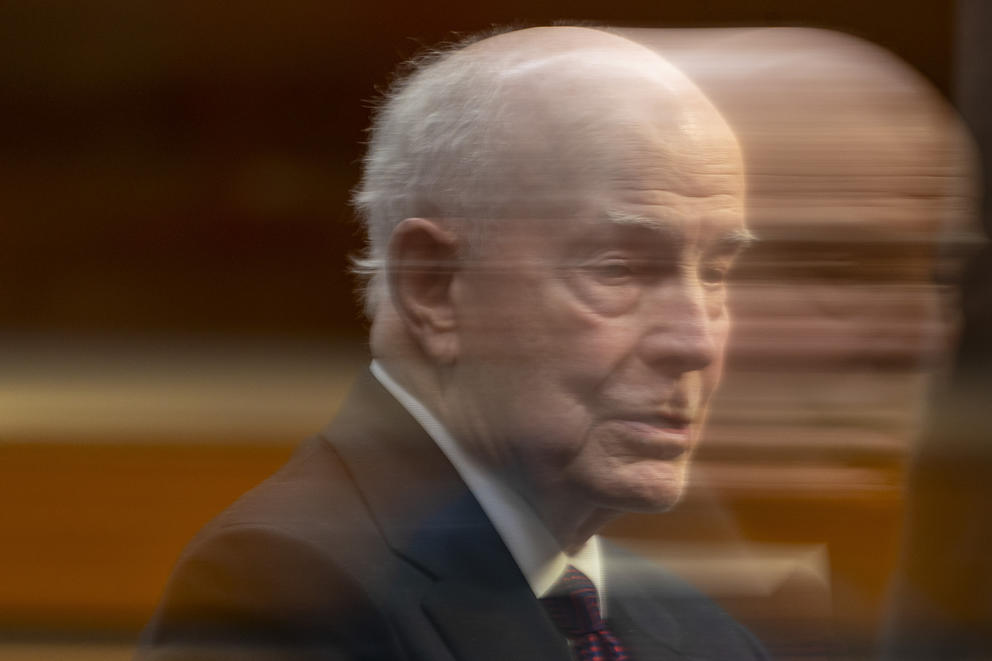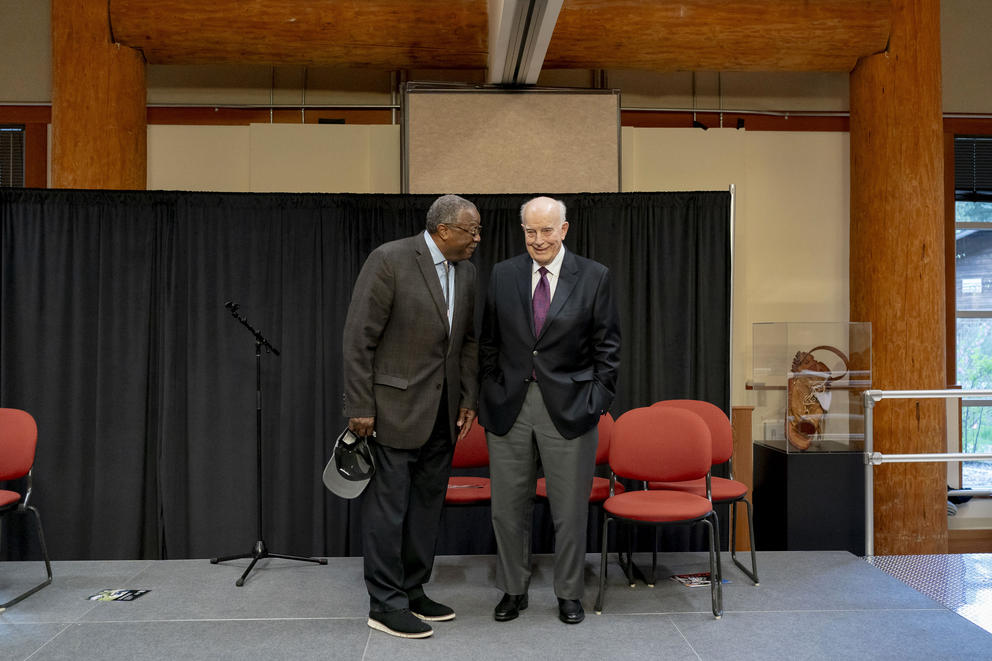Evans, a Republican – Washington’s other living three-term governor – was known for pushing for bipartisanship and setting political party affiliation aside to reach compromise. He has maintained that stance over the years since he left the governor’s mansion in 1977.
The event for Evans was part of the annual meeting of the Northwest Power and Conservation Council, a body that develops regional plans for the Columbia River Basin’s energy and natural resources. The Council, which consists of representatives from Washington, Oregon, Idaho and Montana, discussed the region’s future electricity needs as they relate to the Columbia River Basin, which crosses all four states.
The group met this week in Olympia at Evergreen – where Evans served as college president from 1977 to 1983 – as part of its annual regional rotation. While in Washington, the group took the opportunity to honor Evans, who sat on the inaugural Council from 1981 to 1983.
He was selected by then-Gov. John Spellman to represent Washington when the Council was launched by an act of Congress. Evans sat on the Council until Spellman asked him to fill the U.S. Senate seat vacated when Henry M. Jackson, D-WA, died in office in 1983.
Evans, who answered several questions about his tenure on the Council, said the group’s success was due to bringing together the various elements that had been fighting for resources and control to work with more unity.
“Never suggest that in every case, they will agree. But they will come closer. And I think that that's going to mean an awful lot for the success of the next approach to a major change in the power structure,” Evans said.
Evans, a Seattle native, became governor in 1964, defeating two-term Gov. Albert Rosellini, a Democrat. In the Washington House, Evans had represented the 43rd District in King County and served as the Republican floor leader.
During Evans’ time as governor, 1965 to 1977, Washington established the state community college system. He also bucked popular opinion at the time and welcomed Vietnamese refugees while other states, including California, were unwelcoming in the aftermath of the Vietnam War.
Gov. Evans was handily reelected twice, including defeating Rosellini again in 1972. While in office he was suggested as a possible running mate for both Richard Nixon and Gerald Ford. Evans was governor until 1977, after deciding not to run again. He became president of Evergreen, a four-year public college founded while he was governor.
However, he was called back into the political sphere by Spellman, first on the Northwest Power and Conservation Council and then in the Senate. During his time in the nation’s capital, he and Washington’s other senator, Democrat Brock Adams, pushed President Ronald Reagan to sign off on adding 1.7 million acres of Washington wildland to the National Parks system, including more than 875,000 acres in the Olympic National Park, now known as the Daniel J. Evans Wilderness. He decided not to run for reelection to the Senate in 1988, decrying the bureaucracy and politics that prevented decisions from being made.
Evans also has said in the past that Washington’s experience with the Washington Public Power Supply System, or WPPSS (pronounced “whoops”), influenced his time on the power planning council.
Throughout the 1950s through 1970s, Washington had tried to increase its power grid with five new nuclear power plants. Planning started in the late 1950s but delays, construction costs and rising interest rates through the 1960s and 1970s led to higher-than-planned expenses, as well as a growing mistrust of nuclear energy, eventually leading to the largest municipal bond default in history in 1982.
Congress created the Council in 1980 to help guide the development of hydroelectric power on the Columbia River and balance the region’s power needs with environmental considerations, as interest in developing hydropower as an alternative to nuclear power was growing.
Today, interest in green energy continues, as states like Washington push away from fossil fuels even as energy demands increase.
Evans wrote in his 2022 autobiography that regional planning, and the increased public outreach that the Council started with, might have averted the WPPSS boondoggle:
“My own culpability sprang from buying into the era’s conventional wisdom – namely the wildly inaccurate, survey-based energy demand forecasts from the mid-1960s,” he wrote. “‘Experts’ told us the Northwest would need 20 more nuclear power plants and two more coal-fired plants by the end of the century to meet residential and industrial energy demands.”
Evans also wrote in his autobiography that his involvement with the Council was “one of the most satisfying in my entire career.”
He praised the bipartisan collaboration at the time between the Democratic governors of Montana and Idaho, Ted Schwinden and John Victor Evans, and the Republican governors of Washington and Oregon, Spellman and Victor Atiyeh, as part of the Council’s success when he was on it.
“They did not allow their political affiliation to interfere with their effort to find the best solution to serve the entire region,” Evans wrote. “Their end result was a bipartisan plan for efficient energy use that produced huge savings for our citizens.”






